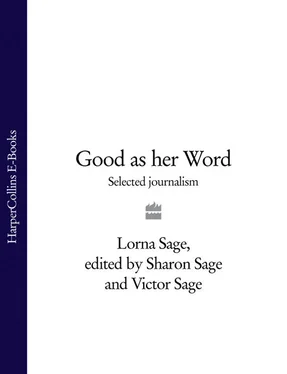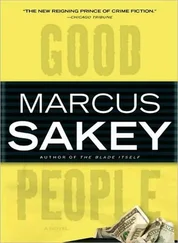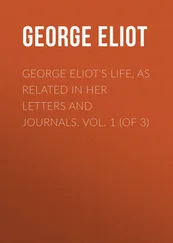However, here she is in her own right, in a new translation by Jean Hawkes, who admits to removing some exclamation marks and dashes, but has otherwise splendidly preserved an original collage of romance, realism, high feeling and visionary prejudice.
We start from the Port of London, bamboozled by sheer size – the world’s biggest city – and mesmerized by the glamour of gaslight; but within a couple of pages we adjust to the English pace: it’s nearly impossible to get from A to B, which is why people are so churlish and weary, not to mention the climate, which is what drives them to drink … In short, Londoners are glum, snobbish, sycophantic, inhospitable, punctual (very sinister this, since journeys take hours) and appallingly conventional:
If a daguerreotype were made of the public in Regent Street or Hyde Park it would be remarkable for the same artificial expressions and submissive demeanour that characterise the crude figures in Chinese painting.
Flora, on the other hand, is a woman of spirit, labouring under the burden of reporting British Podsnappery for the sake of posterity (England is the shape of things to come, if we’re not careful). She is also very French , and blissfully unaware of it – ‘Thank God I long ago renounced any notion of nationality , a mean and narrow concept.’ She also doesn’t exactly believe in God (a mean and narrow concept).
‘Beer and gas are the two main products consumed in London.’ Can it have been true? Could it be still? The link between debauchery and drunkenness is obvious: ‘The sober Englishman is chaste to the point of prudery.’ But other equally incautious remarks give one pause – on the connection between Protestantism, free enterprise and insanity, for instance, or on religious education (‘in the Bible criminals can find good reason for persisting in their life of crime’). And if she’s altogether of her time when she visits prisons looking out for criminal physiognomy and ‘bumps,’ she soars into wilder regions when she confesses: ‘I see prostitution as either an appalling madness or an act so sublime that my mortal understanding cannot comprehend it.’ Her section on the need for infant schools from the age of two, on the other hand, is so prosaic, sane and obvious, it quite takes one’s breath away in our neo-Victorian age.
Volatile as she is, however (she is inconsistent on principle ), it’s not hard to see how she reads England. Its commercial supremacy is founded on India (sharp of her in the 1830s?). It abolished the Slave Trade to prevent other countries founding colonies, and has proletarianised the West Indian Negroes, who are now almost as wretched as the English working class. London itself – the final exposure of British ‘humanitarianism’ – is a slave market, where young children (of both sexes, she observed coolly) are sold for prostitution. England is imperialist, materialist, masculine. Hope lies with the Chartists and the women, then, logically enough.
Her account of a Chartist meeting is in deliberate contrast with her visit to Parliament (squalid boredom, quite apart from the fact that she had to disguise herself as a Turk to get in). The Chartist delegates are alive, eager, visionary, and hopeful – ‘You can see that the poor boy believes in God, in Woman, in self-sacrifice’ – as are the women writers, though perhaps they write because their lives are so socially null:
In France, and any country which prides itself on being civilised, the most honoured of living creatures is woman. In England it is the horse …
Her profundities and inanities alike spring from the weird acuteness of the angle at which she approaches England. Who (except a Sterne) would have a chapter on pockets? Or report on a mud-splashing service for huntsmen too poor to hunt? Now there’s an idea for a small business. You never know, though, with this wild lady, when she’ll turn out to be timely. A final thought for the day:
Oh! The railways, the railways! In them I see the means whereby every base attempt to prevent the growth of union and brotherhood will be utterly confounded.
Life stories
A Need to Testify: Four Portraits IRIS ORIGO
THIS BOOK IS A SET of variations on the theme of biography: its dubious credentials, its delights and pieties, and – Iris Origo would argue, hence her title – its necessity. The four portraits here, all of people involved in resisting Italian fascism, make space for the quiddities and peculiarities of their subjects (whom she knew), but serve at the same time as statements of faith in ‘character’. Her people may be merely particular, but they are also stubborn and courageous; they are loners who none the less feel for and with one another, and many others.
The first of her subjects, Lauro de Bosis, is the hardest for her to make real, partly because he seems to have lived out his brief life as mythology. He was aristocratic, half-American, brought up on Shelley and Whitman, a bard and a chemist who advocated a conservative (King and Church) take-over from Mussolini. At 26 he wrote a verse drama about Icarus, and at 30, in 1931, he flew over Rome in a small plane, scattering anti-fascist leaflets, and vanished west to crash into the sea.
His style, in every sense, was excessive – though he did, in one letter, locate the twist in history that would lend him substance. ‘If the American Revolution had failed, Washington and Jefferson would be considered as seditious Bolsheviks,’ he reflected. When, 12 years later, Mussolini fell in (roughly) the way he had planned, de Bosis’s story returned to earth.
It was never, anyway, as Marchesa Origo points out, just his story: three years before his terminal gesture he had fallen in love with a celebrated American actress, Ruth Draper, whose long life comes next, linked with his. Here the biographer’s brief is different, for Ruth Draper not only came from a densely sociable background (‘old New York,’ very Edith Wharton), but had monologued her way through a multitude of characters, and round the world, before she met de Bosis, in middle age. She was all life-wish and, though savaged by his death, went on adding to her repertoire and her friends for a quarter of a century.
Her practical belief in his cause outlived him too: among other things, she endowed a chair in Italian history at Harvard, which was occupied by a man unlike de Bosis in every way but one, Gaetano Salvemini, socialist, republican, sceptic – and anti-fascist. Salvemini is the anchor man of the book, ‘the man who would not conform’ though events battered him grotesquely. In 1908 his wife and their five children died in the Messina earthquake; in the years that followed his whole generation, it almost seemed, was dispersed and destroyed – murdered on fascist orders, murdered in Spain, driven (like himself) into exile. In 1946, as the world repaired itself, the stepson of his second marriage was tried and executed as a collaborator in France. He comes through it all, in this portrait, suffering, resilient and mocking, with just a hint of secular sainthood.
Here Iris Origo’s conviction that ‘Every individual life is also the story of Everyman ’ occupies the foreground. Her last subject, Ignazio Silone, is allowed to characterise himself, in passages from Fontamara, Bread and Wine and Emergency Exit , but at the same time the book’s structure quietly manoeuvres him into an exemplary role, as the priest of a non-existent church. Silone’s defection from the Communist Party, his long exile and his even longer wait for recognition in his own country, even the form of his final illness, in 1978, when agraphia scrambled words for him with a last irony – all of this piles up as evidence of ‘the need to testify’.
Читать дальше












